#coelodonta antiquitatis
Explore tagged Tumblr posts
Text

Is the woolly rhino tiny, or is that tree huge?
#gaming#virtual photography#far cry#far cry primal#woolly rhinoceros#woolly rhino#Coelodonta#Coelodonta antiquitatis
6 notes
·
View notes
Text

Artwork elephant, large canvas wall art prints
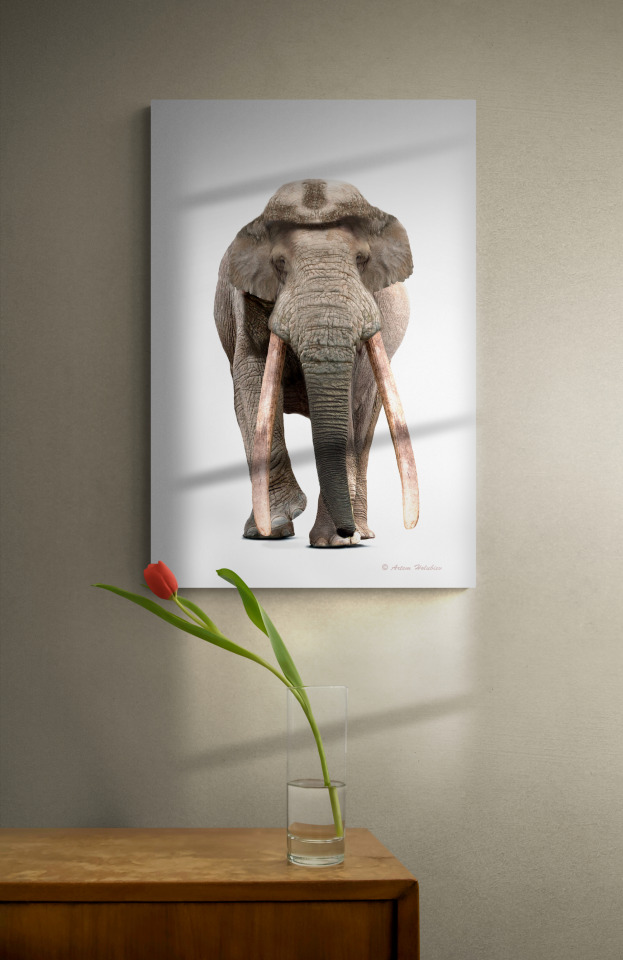
Unusual gift for boyfriend, girlfriend gift, husband gift, new home gift.
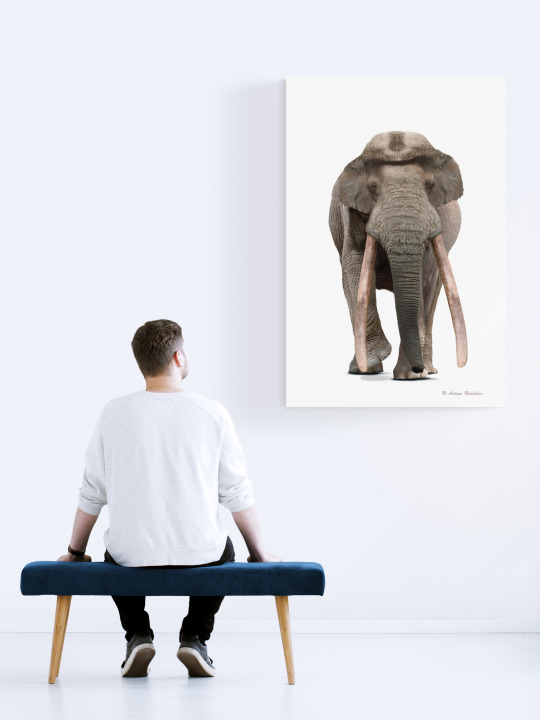
This is a European forest elephant that lived in Europe during the Pleistocene. Along with the forest rhinoceros, "Merka" was one of the main ecosystem engineers in Europe.
#Artwork elephant#large canvas wall art prints#Unusual gift for boyfriend#girlfriend gift#husband gift#new home gift#Used as rustic home decor#living room wall art#kitchen wall decor#college room decor#cottagecore decor#artworks#extinct animal illustration#ice age paleoart#amazing facts#pleistocene#coelodonta antiquitatis#prehistoricfauna#animal wall decor#paleontology#paleoart#sciencegift#science#wildlife#woollyelephant#iceage#iceageart#illustration#dinosaur art#dinopants
35 notes
·
View notes
Text


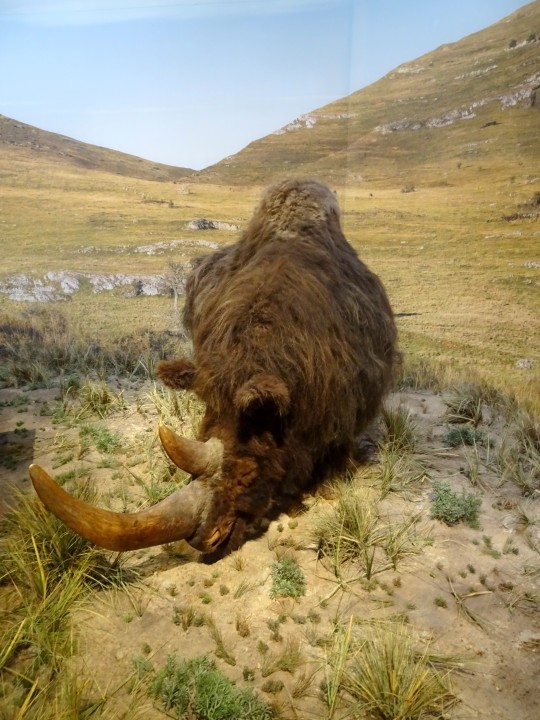
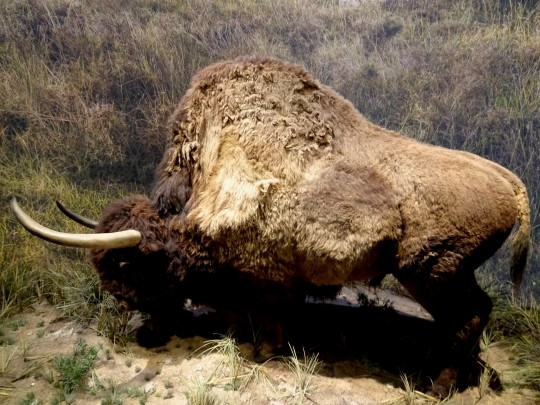

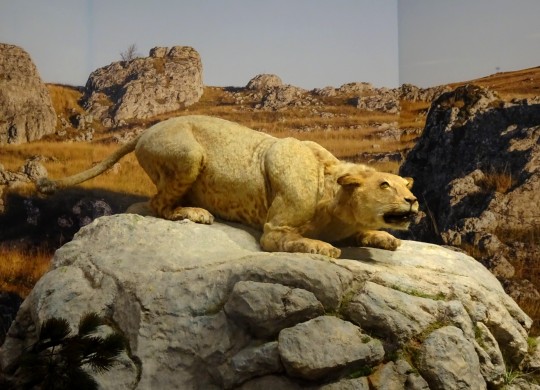
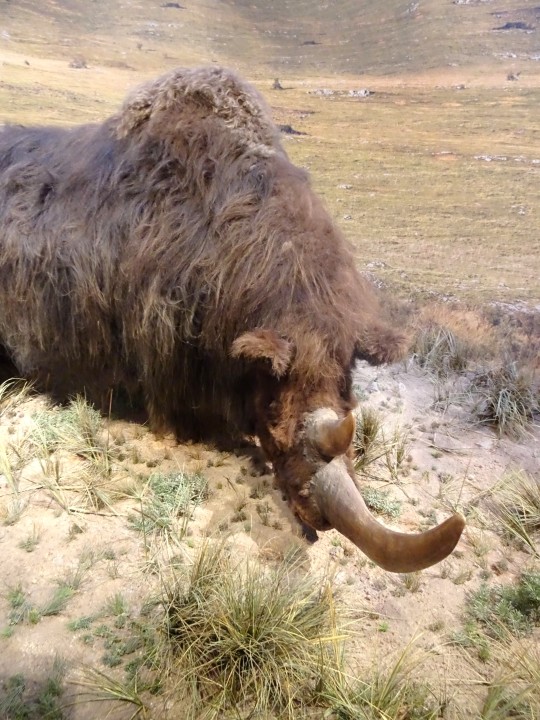
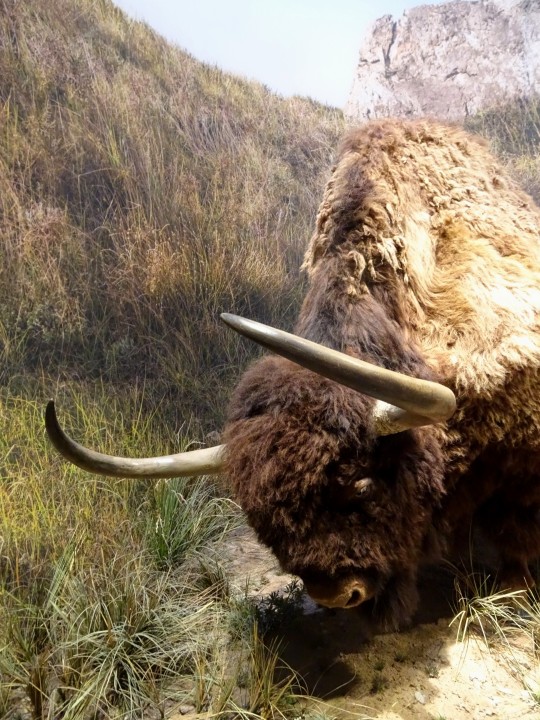
La semaine dernière, j'ai retrouvé mes amis Julien et Katie à Remoulins dans le Gard (Languedoc). On est allés à Vallon-Pont-d'Arc (Ardèche) visite la réplique de la fameuse Grotte Chauvet dont les peinture rupestres datent de l'aurignacien.
Après la grotte, une galerie où sont restitués les êtres vivants dans les steppes de la région, pendant l'Aurignacien : ici, on voit Mammuthus primigenius (le Mammouth laineux), le Lion des Cavernes (Panthera leo spelaea), Coelodonta antiquitatis (le Rhinocéros laineux) et Bison priscus (le Bison des Steppes)
#vallon-pont-d'arc#ardèche#grotte#grotte chauvet#chauvet#chauvet 2#préhistoire#fossile#aurignacien#glaciation#taxidermie#lion des cavernes#panthera spelaea#panthera leo spelaea#coelodonta antiquitatis#rhinocéros laineux#mammuthus primigenius#mammouth#mammouth laineux#bison#bison des steppes#bison priscus
6 notes
·
View notes
Text
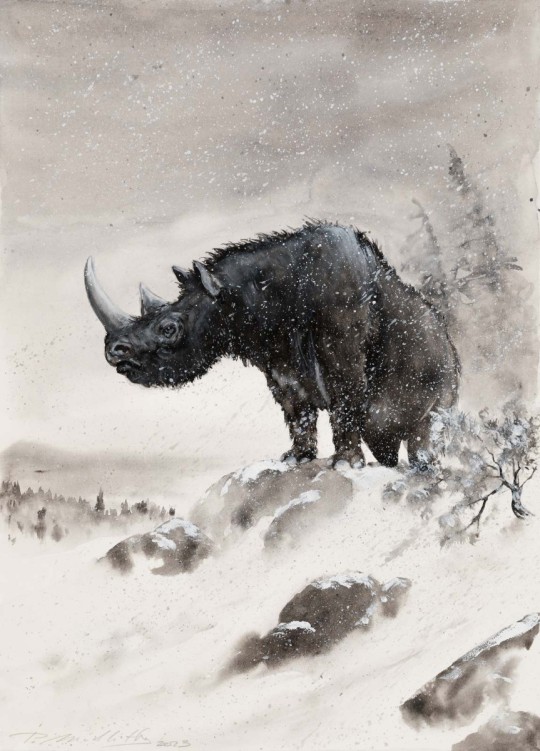
Coelodonta antiquitatis by Petr Modlitba
1 note
·
View note
Text

Coelodonta Antiquitatis, The Woolly Rhino - by Mauricio Anton
#rampaging rhinos#rhinos#rhinoceros#prehistoric rhino#woolly rhinoceros#prehistoric animals#paleoart#prehistoric art
798 notes
·
View notes
Text
Some good news from Indonesia: the Sumatran Rhino Sanctuary in Way Kambas National Park has just announced that on November 25th their female Sumatran Rhino named Delilah gave birth to a healthy male calf!!!

(Photo credit: Indonesian Ministry of Environment and Forestry)
The as of yet unnamed calf is the second calf born at the sanctuary this month, and his mother Delilah was the second calf ever born at the sanctuary as well as the first captive bred Sumatran rhino to successfully give birth in captivity, so this is great news for captive breeding efforts of this species. There are only somewhere between 34 and 47 Sumatran rhinos in the wild, so captive breeding is incredibly important for this species survival. The sanctuary plans to eventually release the rhinos born at the sanctuary in order to help build the wild population back up. This baby is the fifth calf to be born at the sanctuary, and in addition to being Delilah’s first calf, he is also the first calf to be sired from his father, Harapan, who was originally born in the Cincinnati Zoo.
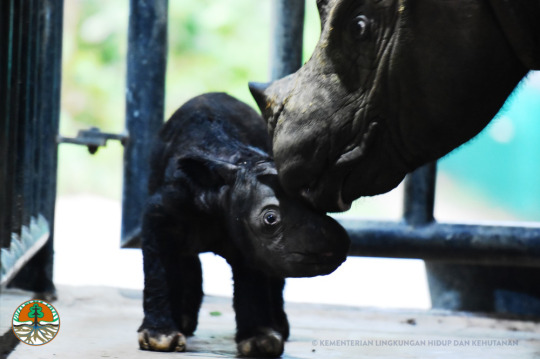
The mother and calf are currently being held in a naturalistic enclosure at the sanctuary (as the goal is to try to get them to live a life as similar to in the wild as possible) and are being heavily guarded to protect them from poachers. This species has suffered so much due to a combination of poaching for their horns as well as habitat loss. They are also pretty hard to keep and breed in captivity due to their shy nature, so this calf is amazing news!
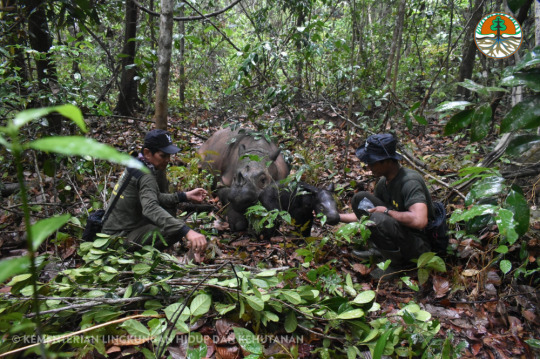
Also! Fun fact: this species of rhino is the closest living relative of the extinct Woolly Rhinoceros (Coelodonta antiquitatis). Which makes sense since the Sumatran rhino is the hairiest of all the living rhino species, which you can especially see with the babies.
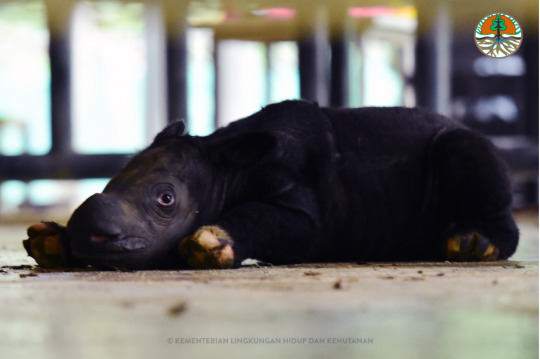
#indonesia#Indonesian wildlife#rhinoceros#sumatra#Sumatran rhinoceros#conservation#endangered species#good news#baby animals#baby rhino#wildlife#asian wildlife#animals#animal lover
357 notes
·
View notes
Text

“In the course of twenty million years, mammals got more and more successful until they were the biggest, fiercest, and most spectacular animals on the planet. Whatever the climate, whatever the habitat, mammals made it their own. Their great strength was their ability to adapt. They grew to gigantic sizes, they evolved into powerful killers like the famous sabre-tooth cats, and they even laid claim to the oceans.”
- Kenneth Branagh, prologue to “Walking with Beasts”
Sketches of some of the incredible wildlife of the Cenozoic Era. None of the animals are exactly shown to scale. From left to right, bottom to top:
Arctocyon, Barylambda, Coryphodon, Titanoboa
Uintatherium, Notharctus, Mesonyx, Eobasileus
Leptictidium, Gastornis, Propaleotherium, Titanomyra, Godinotia, Pakicetus, Ambulocetus
Apidium, Arsinotitherium, Andrewsarchus, Embolotherium, Moeritherium, Dorudon, Basilosaurus, Perucetus
Megacerops, Cainotherium, Merycoidodon
Cynodictis, Paraceratherium, Hyaenodon gigas, Chalicotherium, Paraentelodon
Gentilicamelus, Amphicyon, Daeodon, Moropus, Dinocrocuta, Platybelodon, Gomphotherium, Pelagornis, Purussasaurus, Odobenoceratops, Otodus megalodon
Phoruschracos, Astrapotherium, Teleoceras, Synthetoceras, Samotherium, Livyatan
Australopithecus afarensis, Deinotherium, Ancylotherium, Dinofelis
Mammuthus columbi, Smilodon fatalis, Bison latifrons, Aenocyon dirus, Arctodus simus, Panthera atrox, Titanotylopus, Equus hersternus, Sivatherium, Gigantopithecus, Paleoloxodon
Smilodon populator, Macrauchenia, Doedicurus, Megatherium, Glyptodon, Toxodon
Mammuthus primigenius, Megaloceros giganteus, Coelodonta antiquitatis, Bos primigenius, Homo neanderthalensis, Elasmotherium, Bison bonasus
#paleoart#paleontology#cenozoic mammal#cenozoic animals#cenozoic mammals#cenozoic era#cenozoology#cenozoic#palaeontology#paleoartist#artists on tumblr#paleoartists on tumblr#paleoblr#paleogene#neogene#quaternary#paleocene#eocene#oligocene#miocene#pliocene#pleistocene#palaeoart#paleo#palaeoblr#paleoillustration
56 notes
·
View notes
Text
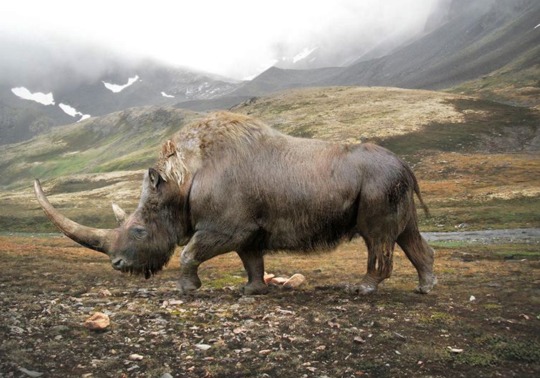
†Woolly rhinoceros (Coelodonta antiquitatis)
Art credit: Roman Uchytel
You’ve probably heard of this animal before- a giant, woolly-coated relative of modern rhinos with a metre-long horn. It lived in a habitat which covered most of northern Eurasia for 100,000 years, before disappearing abruptly 12,000 years ago at the end of the last ice age: the mammoth steppe. This was a cold, dry grassland which often snowed, and was inhabited by mammoths, bison, reindeer, horses, saiga antelope, mountain sheep, cave lions, wolves, and a variety of other animals. Here, the woolly rhinoceros was one of the largest herbivores, eating grasses and shrubs. Humans encountered these animals, and cave drawings made by prehistoric artists give us clues to their life appearance and behaviour.
#markhors-menagerie#animal facts#animals#biology#fun facts#palaeontology#prehistoric animals#ungulates#odd toed ungulates#rhinoceros#woolly rhinoceros#Coelodonta
98 notes
·
View notes
Text
Did you know, that there was once an ancient woolly rhinoceros called Coelodonta antiquitatis, which originated in both Europe and Asia. This species of rhino had been around during the Pleistocene epoch and existed until the end of the last glacial period.

In present day, it’s closest living relatives are the Sumatran rhinos.
6 notes
·
View notes
Text
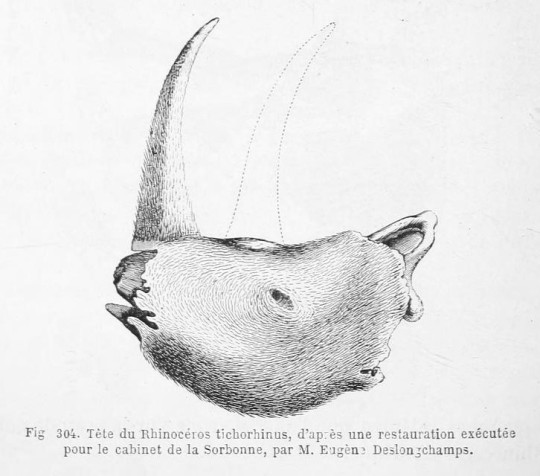
"Tète du Rhinocéros tichorhinus, d’ap-ès une restauration exécutée pour le cabinet de la Sorbonne, par M. Eugene Deslongchamps" [Head of Rhinoceros tichorhinus, based on a restoration carried out for the Sorbonne cabinet, by Mr. Eugene Deslongchamps], now Coelodonta antiquitatis, from La terre avant le déluge [The world before the deluge] by Louis Figuier, 1863
https://archive.org/details/laterreavantled00figu/page/342/mode/1up
9 notes
·
View notes
Text

RU 2023 60₽ Woolly Rhinoceros (Coelodonta antiquitatis) RU 2023 30₽ Valday 45R
#ru#russia#2020s#animals#prehistoric#rhinceros#rhino#ships#valday 45r#on postcard#stamp#stamps#philately#stamp collection#snail mail#postage#postage stamp#usps
2 notes
·
View notes
Text
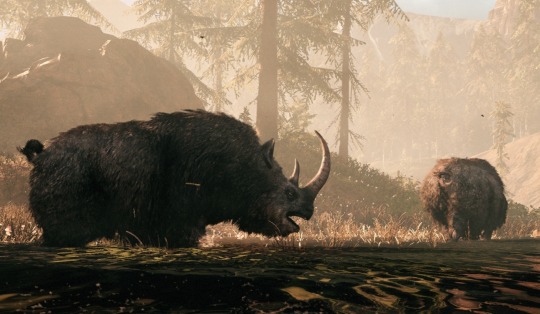
Big, hairy, and horn…ed.
#gaming#virtual photography#far cry#far cry primal#woolly rhinoceros#woolly rhino#Coelodonta#Coelodonta antiquitatis
0 notes
Text

This is the forest European rhinoceros "Merka". He lived next to the forest elephant, the European hippopotamus and the water buffalo. Unlike most modern rhinos, it was covered in hair and looked like a Sumatran rhinoceros.
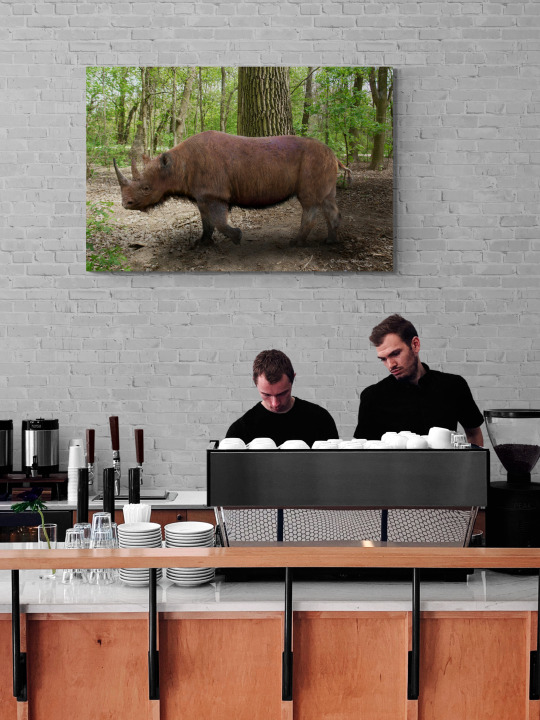


#Ice age paleoart#The Merck's rhino large canvas wall art prints#Excellent coworker gift#fathers day gifts#anniversary gift#With this original artwork you'll have exclusive office or dining room wall art#rustic decor#animal wall decor#wildlife#landscape#nature#kolyma woolly rhino#Coelodonta antiquitatis#permafrost#Woolly rhinoceros#paleontology#prehistoricfauna#extinct animal illustration#extinción#recently extinct#extinct animals
6 notes
·
View notes
Text
[ID: edited picture of animals that exist today and their extinct counterpart side by side in nature for size comparison, all of their extinct counterparts are usually way larger than the modern animals. the animals are in order: the modern sumatran orangutan (pongo abelli) and the extinct gigantopithecus (gigantopithecus black), the modern african bush elephant (loxodonta africana) and the extinct asian straight-tusked elephant (palaeoloxodon namadicus), the modern great white shark (carcharodon carcharias) and the extint megalodon (otodus megalodon), the modern northern hairy-nosed wombat (lasiorhinus krefftii) and the extinct diprotodon (diprotodon optaum), the modern linnaeus two-toed sloth (choloepus didactylus) and the extinct ground sloth (megatherium americanum), the modern clouded leopard (neofelis nebulosa) and the extinct sabertoothed cat (smilodon populator), the modern spectacled bear (tremarctus ornatus) and the extinct pleistocene south american short-faced bear (arctotherium angustidens), the modern sumatran rhinoceros (dicerorhinus sumatrensis) and the extinct woolly rhinoceros (coelodonta antiquitatis), the modern giant armadillo (priodontes maximus) and the extinct glyptodon (glyptodon), the modern indri or babakoto (indri indri) and the extinct giant lemur (archaeoindris fontoynontii), the modern white rhinoceros (ceratotherium simum) and the extinct paraceratherium (paraceratherium transouralicum), the modern great spotted kiwi (apteryx haastii) and the extinct south island giant moa (dinornis robustus). end ID]
Illustrations Show Size Difference Between Prehistoric Animals and Modern Descendants
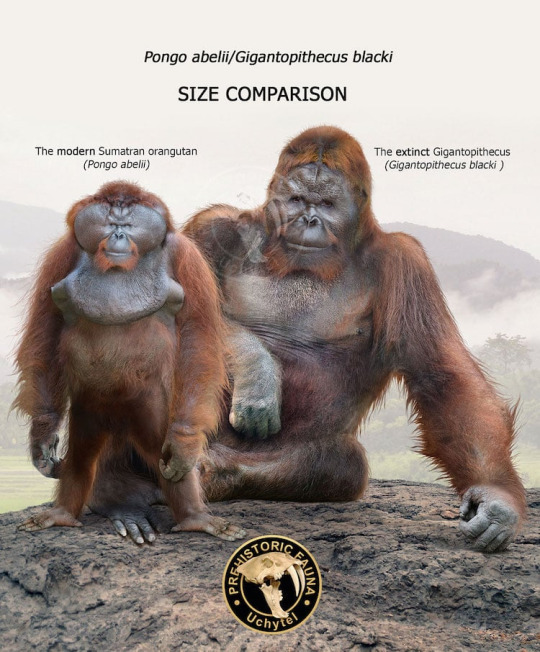
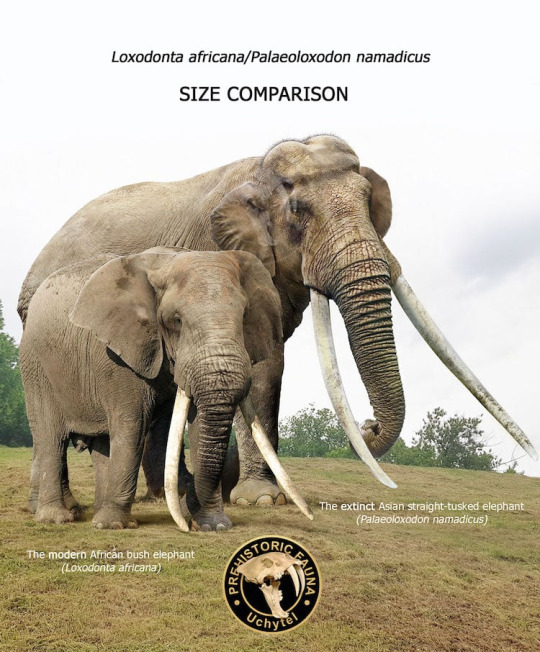
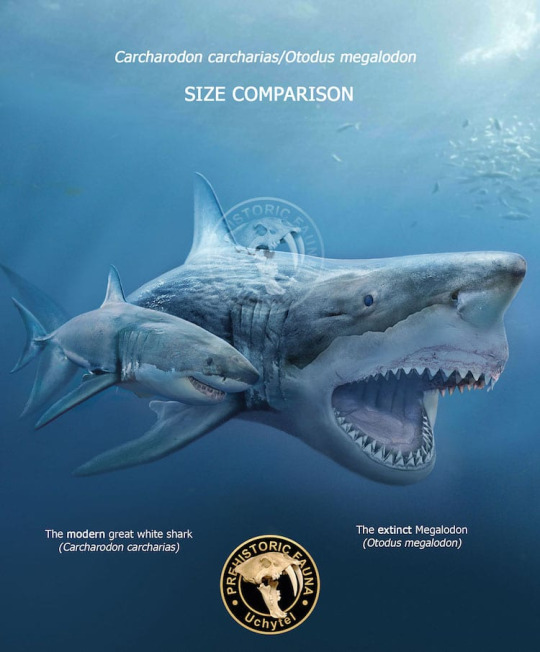
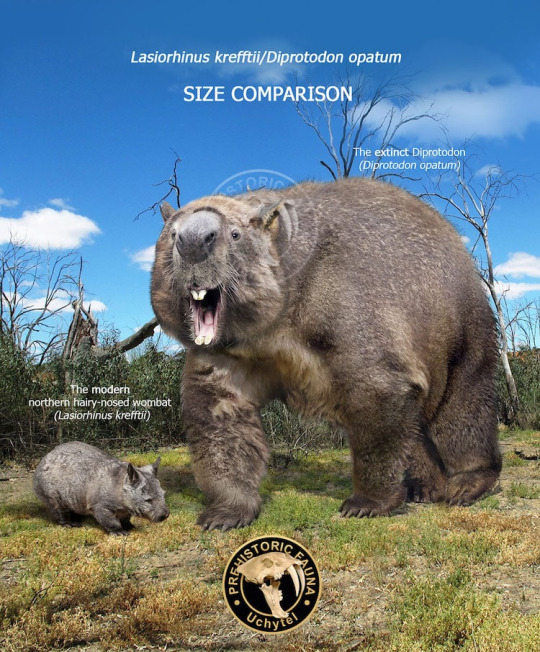
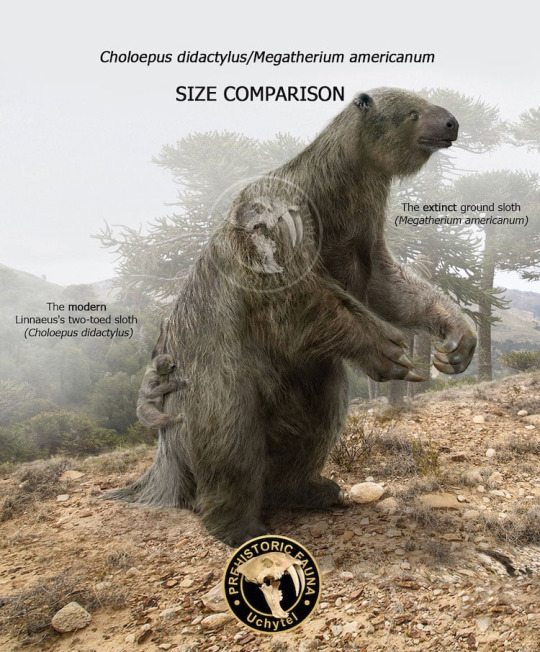
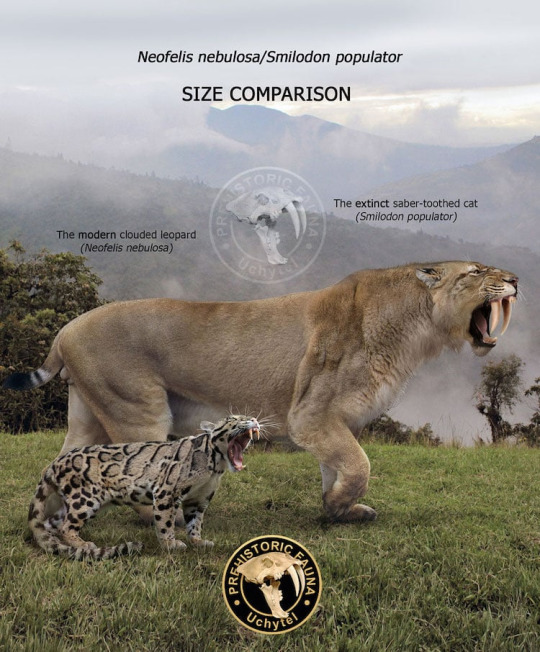
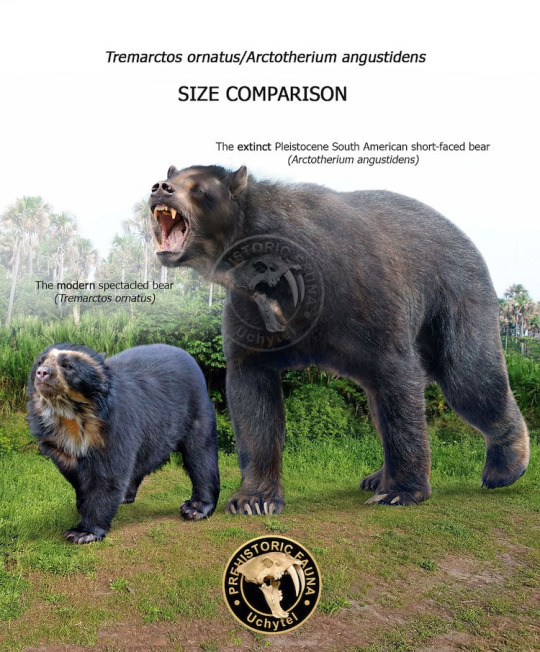
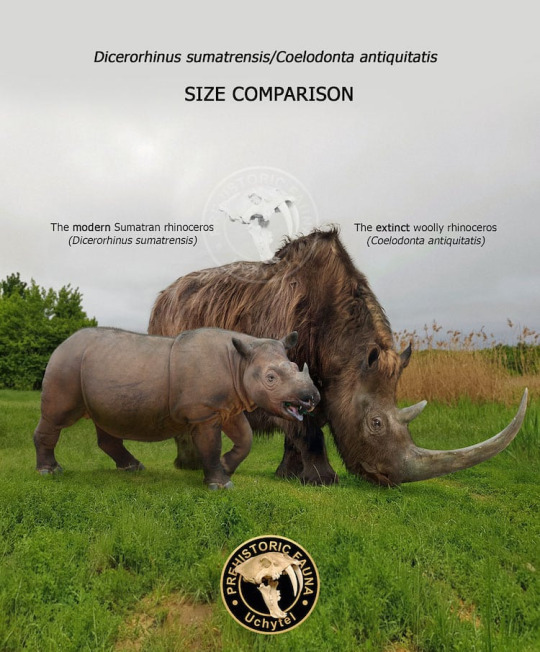
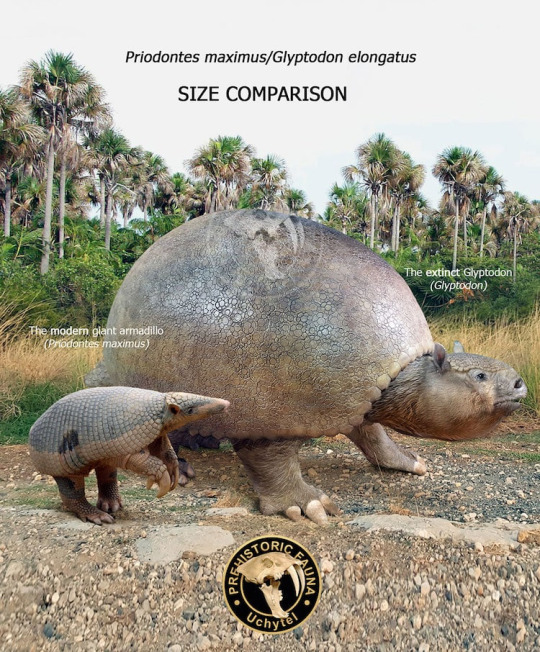
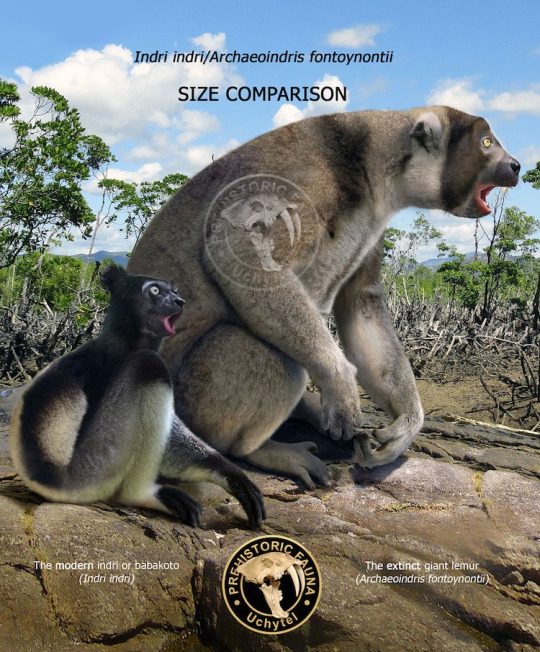
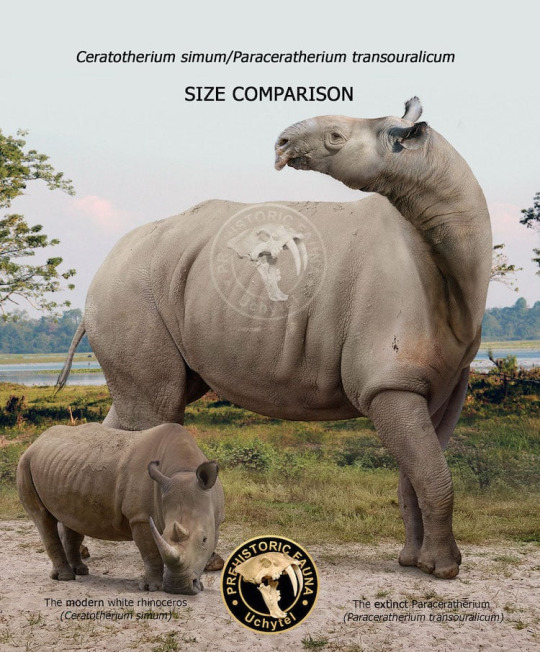
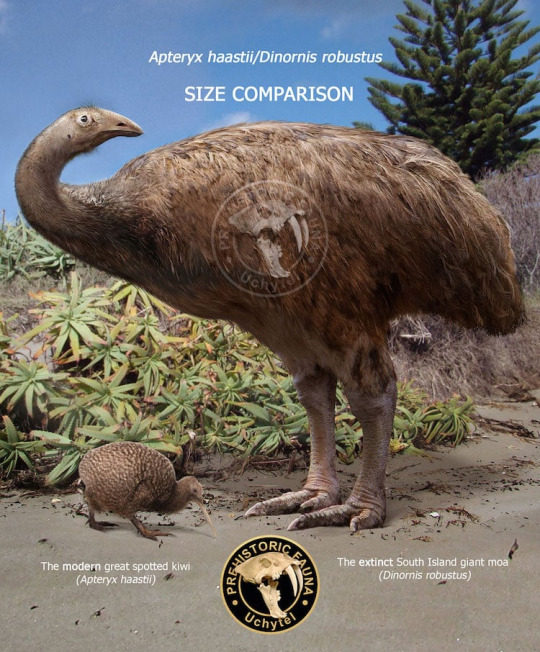
92K notes
·
View notes
Text
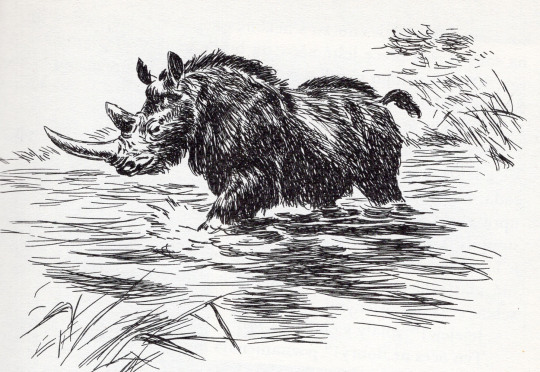
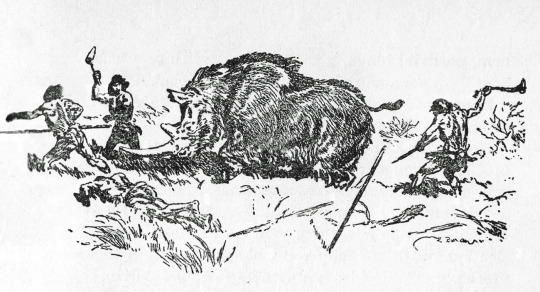

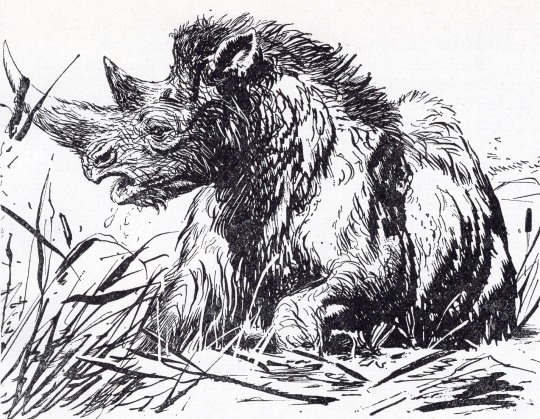
Some ink sketches of Coelodonta antiquitatis, the Woolly Rhinoceros of Pleistocene Eurasia, by the great Zdenek Burian. His ink illustrations are just as evocative as his paintings.
1 note
·
View note
Text
Ancient Humans Played Role in Demise of Woolly Rhinoceros, New Research Suggests
The extinction of the woolly rhinoceros (Coelodonta antiquitatis) at the onset of the Holocene remains an enigma, with conflicting evidence regarding its cause and dynamics. Using a computationally intensive modeling approach and extensive paleontological and ancient DNA information, a team of paleontologists led by University of Adelaide and University of Copenhagen scientists reveals how and…

View On WordPress
0 notes